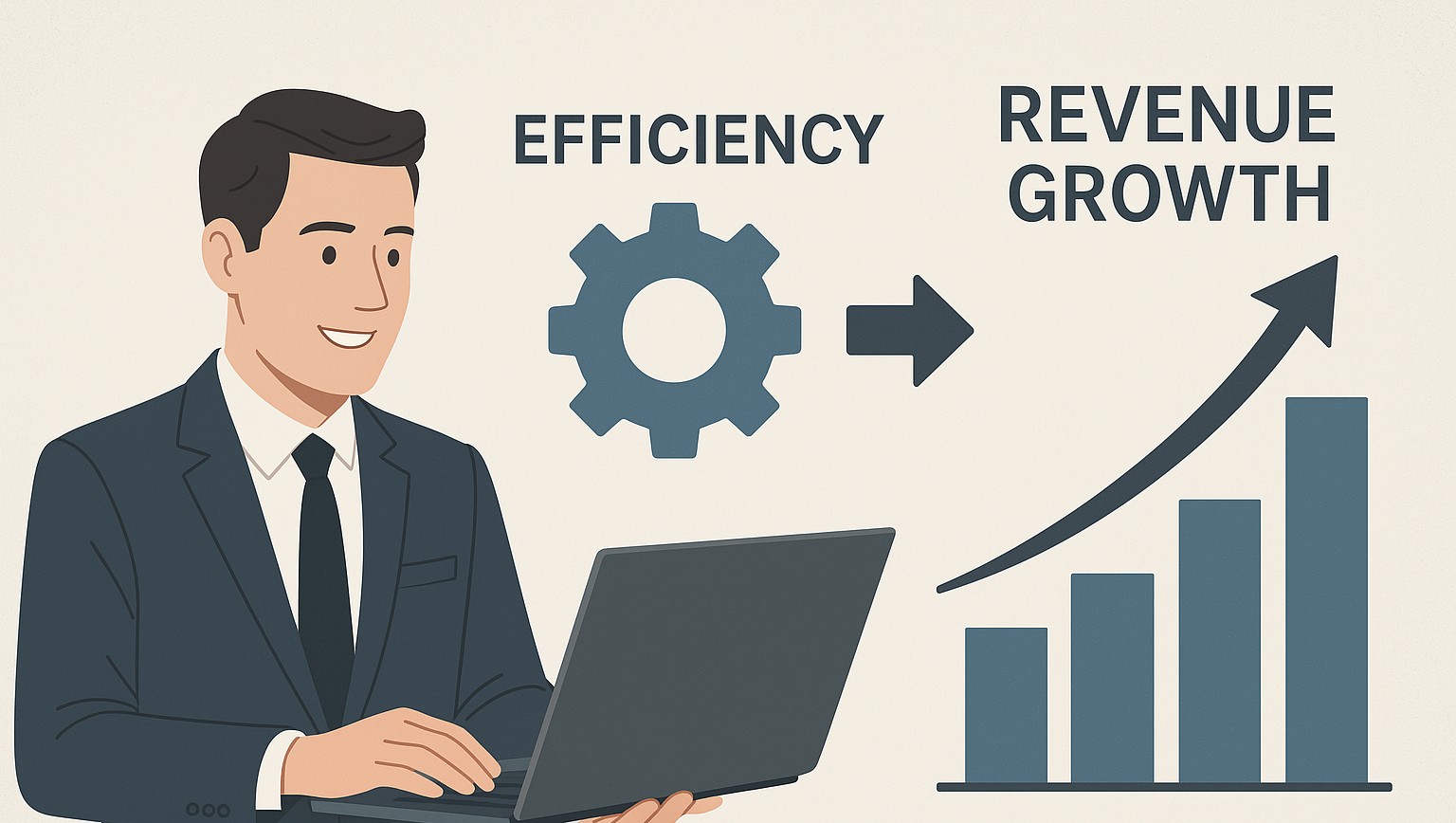Focusing on a specific industry, better known as a vertical, can lead to operational efficiencies, deeper client relationships, and more effective marketing, but it requires careful evaluation. Specializing in a vertical can streamline your operations and improve profitability, but it also limits your focus to a narrower client base.
This checklist helps assess whether vertical specialization makes sense for your MSP by considering profitability, demand, marketing potential, and your ability to deliver tailored services.
Checklist Questions
1. Do I Currently Serve Clients in This Vertical?
- Yes / No
- If yes, how many and are they high-value clients?
- Specifics to consider:
- Review your client roster to determine how many clients you currently serve in this vertical. Are they stable, long-term clients, or project-based? Consider the total revenue from these clients compared to other industries.
- Determine if these clients are representative of the typical businesses within the vertical.
- Impacts on current business:
- If these clients generate high-value, repeatable business, specializing in this vertical could increase revenue predictability and stability.
- If you only serve a small number of clients in this vertical, diversifying your focus before specialization might be necessary to avoid over-reliance on a few customers.
- Future benefits:
- Specializing in a vertical where you already have clients can deepen relationships, leading to higher retention and opportunities for upselling more tailored services.
- Having existing experience in the vertical will help position your MSP as a subject matter expert, making marketing and business development easier.
2. Are these Clients Profitable?
- Yes / No
- Review margins and operational costs specific to this vertical.
- Specifics to consider:
- Analyze the profitability of these clients by reviewing service margins, resource consumption (e.g., time, tools), and any specific requirements that may increase costs.
- Consider whether you had to discount services to win these clients and whether your pricing aligns with the vertical’s industry standards.
- Impacts on current business:
- If clients in this vertical are more resource-intensive than others, you may experience reduced profit margins unless pricing strategies are optimized.
- High profitability indicates that specialization could further enhance operational efficiencies and allow you to allocate resources more effectively.
- Future benefits:
- Vertical specialization often leads to higher margins through operational standardization and repeatable processes. Specializing could increase your profitability if managed effectively.
- By streamlining services for this vertical, you can reduce costs over time, boosting margins while offering competitive pricing.
3. Will Adding More Clients in This Vertical Increase Efficiencies and Profitability?
- Yes / No
- Consider operational standardization, product expertise, and scalability.
- Specifics to consider:
- Evaluate whether standardizing tools, processes, and service offerings for this vertical could reduce operational overhead. For example, can you use the same RMM, CRM, or cybersecurity solutions across multiple clients in this vertical?
- To reduce time and resources spent on each new client, assess whether onboarding additional clients in this vertical can be streamlined.
- Impacts on current business:
- Focusing too much on this vertical could leave other parts of your business underserved, impacting your ability to respond to a broad client base.
- Operational standardization could reduce delivery costs and complexity, allowing your team to work more efficiently across similar clients.
- Future benefits:
- Increased specialization in a vertical will allow your team to become experts in the specific challenges and solutions that industry faces, improving service quality and client satisfaction.
- As you scale within this vertical, you may experience network effects such as easier client onboarding and referral opportunities, leading to higher growth and lower costs.
4. Is there a Strong Demand for MSP Services in This Vertical in My Service Area?
- Yes / No
- Research local/regional demand and the competitive landscape.
- Specifics to consider:
- Conduct market research to determine how many businesses in your area fall into this vertical. Check if they are underserved by MSPs or if there is a growing demand for IT services in this industry.
- Analyze the competitive landscape. Are there established MSPs already dominating this vertical in your area, or is there room for a new player?
- Impacts on current business:
- Targeting a vertical with low demand could result in slow growth and reduced opportunities for expansion.
- However, a high demand vertical could create intense competition, requiring a significant investment in marketing and differentiation efforts.
- Future benefits:
- Strong demand means a growing client base, making specialization more sustainable and allowing for scalable business development.
- A vertical with consistent demand can provide a stable revenue stream, offering predictability for future growth.
5. Can My Current Clients Refer Me to Similar Businesses?
- Yes / No
- Assess client relationships and the potential for referrals.
- Specifics to consider:
- Look at your existing client relationships. Are these clients well-connected within their industry? Do they actively participate in industry associations or peer groups that could lead to referrals?
- Assess whether your current client relationships are strong enough that these businesses would confidently refer you to their industry peers.
- Impacts on current business:
- If your current clients can refer you, it could rapidly increase client acquisition in this vertical without substantial investment in marketing or sales efforts.
- Without a referral pipeline, you may face slower growth in this vertical, relying more heavily on marketing to generate leads.
- Future benefits:
- Word-of-mouth referrals within a vertical can accelerate your growth, as businesses in the same industry often share similar needs and face the same challenges.
- Positive referrals will increase your credibility in the vertical, making it easier to win new clients without a lengthy sales process.
6. Can I Effectively Tailor my Marketing Efforts to Target Companies in This Vertical?
- Yes / No
- Evaluate existing marketing tools and channels for vertical-specific outreach.
- Specifics to consider:
- Assess whether your current marketing tools (CRM, email marketing platforms, social media, etc.) can be easily adapted for vertical-specific messaging.
- Identify vertical-specific marketing channels, such as industry trade shows, conferences, publications, or online forums, to focus your outreach efforts.
- Impacts on current business:
- A poorly tailored marketing strategy could waste time and resources, leading to low conversion rates and ineffective campaigns.
- On the other hand, vertical-specific marketing efforts could limit your broader marketing campaigns, reducing visibility to clients in other industries.
- Future benefits:
- Well-targeted marketing will result in more qualified leads, reducing acquisition costs and improving ROI on your marketing spend.
- Vertical-focused campaigns build your brand reputation within the industry, helping you establish authority and attract clients with higher budgets.
7. Do I Need to Invest in Vertical-specific Tools, Training, or Partnerships?
- Yes / No
- Identify necessary tools, expertise, and partnerships.
- Specifics to consider:
- Evaluate whether the vertical requires specialized tools, such as compliance management software, industry-specific cybersecurity solutions, or other technical expertise.
- Determine whether partnerships with industry-specific vendors or consultants could enhance your service delivery and credibility in this vertical.
- Impacts on current business:
- New tools, training, or partnerships could increase short-term expenses and complicate existing operations.
- Without the necessary expertise, expanding into this vertical could result in poor service delivery, harming your reputation.
- Future benefits:
- Investing in specialized tools or partnerships early on can streamline service delivery and set you apart from competitors, enhancing your MSP’s value proposition.
- Acquiring industry expertise makes your MSP more attractive to clients within the vertical, improving client trust and retention.
8. Do I Have a Clear Understanding of Compliance and Regulatory Requirements for This Industry?
- Yes / No
- Consider strict standards like HIPAA, GDPR, or industry-specific compliance.
- Specifics to consider:
- Review the compliance and regulatory standards for the vertical — such as healthcare, finance, legal. These industries often have strict data protection and cybersecurity requirements.
- Assess whether you have in-house expertise to manage these compliance standards or if you need to invest in external consultants or training.
- Impacts on current business:
- Failure to meet industry compliance standards could lead to legal liabilities, fines, and reputational damage for both you and your clients.
- Ensuring compliance expertise could divert resources from other parts of your business, reducing operational flexibility.
- Future benefits:
- Mastering compliance in a specific vertical adds value to your MSP and positions you as an indispensable partner, especially for regulated industries.
- It opens high-margin service opportunities, such as compliance audits and ongoing monitoring, providing a long-term revenue stream.
9. Are My Competitors Already Serving This Vertical Effectively?
- Yes / No
- Assess market saturation and competitive advantage.
- Specifics to consider:
- Research whether competitors in your region or market are already serving this vertical and how well-established they are. Evaluate their strengths and weaknesses.
- Determine if there is room for your MSP to offer a differentiated service or a niche focus that competitors aren’t addressing.
- Impacts on current business:
- Entering a saturated market could lead to price wars and lower profit margins unless you have a clear competitive advantage.
- If competitors are offering superior service, it may be difficult to gain market share without significant investment.
- Future benefits:
- Identifying gaps in competitors’ offerings can help you carve out a niche or differentiate your services, positioning your MSP for long-term success.
- Successfully entering a competitive market with a unique value proposition can establish your MSP as a leader, attracting clients who are looking for an alternative.
10. When Was the Last Time I Reviewed My Focus on This Vertical?
- Date: __________
- Set a review cadence to reassess vertical specialization every six to 12 months.
- Specifics to consider:
- Regularly review your client base, profitability, and market conditions to ensure that the vertical is a viable focus.
- Use these reviews to assess whether industry changes (e.g., regulations, technological advancements) might affect your ability to serve the vertical.
- Impacts on current business:
- Failing to regularly assess your vertical focus could lead to stagnation or missed opportunities as the industry evolves.
- Without reviews, you may overlook declining profitability or growing competition in the vertical.
- Future benefits:
- Consistent reviews allow you to stay agile, adapting to market changes and ensuring that your vertical focus remains aligned with long-term business goals.
- Regular assessments enable you to shift resources and strategies quickly, ensuring your MSP stays competitive and profitable within the vertical.
Decision Outcome
If you answer “Yes” to most of these questions …
Specializing in this vertical could offer significant strategic advantages for your MSP. You are well positioned to grow profitably while improving operational efficiency and client retention.
If you answer “No” frequently …
Consider strengthening your market readiness by improving your expertise, tools, and marketing strategies, or exploring other verticals that may be a better fit for your MSP’s current capabilities.
Conclusion
Specializing in a vertical can streamline operations, deepen client relationships, and lead to higher profitability, but it requires a thorough evaluation of your MSP’s capabilities, market opportunities, and resources. By considering the specifics of your current client base, profitability, and market demand, as well as planning for future growth, your MSP can make an informed decision that positions you for long-term success in a targeted industry.
ChannelPro has created this checklist to help busy MSPs streamline their decision-making process. This checklist offers a starting point for evaluating key business choices, saving time and providing clarity. While this checklist is designed to guide you through important considerations, we encourage you to seek additional references and professional advice to ensure fully informed decisions.
Featured image: iStock














